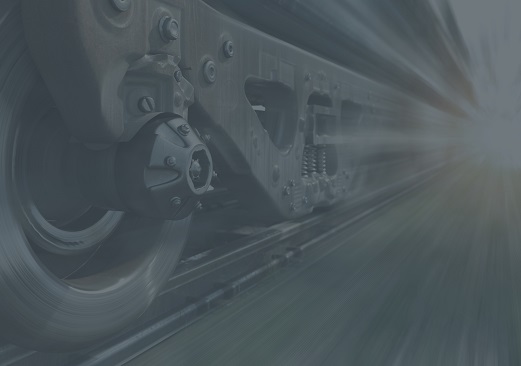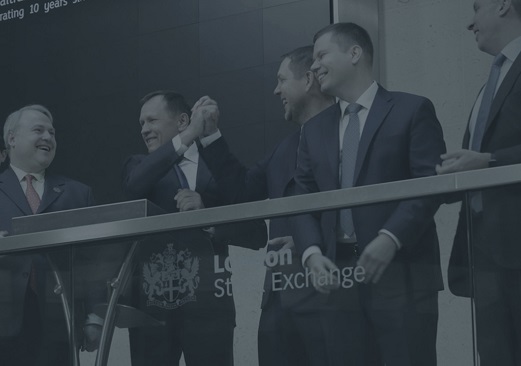Terms that require definitions are marked with capital letters and their definitions are provided below in alphabetical order:
Adjusted EBITDA (a non-IFRS financial measure) represents EBITDA excluding “Net foreign exchange transaction gains/(losses) on financing activities”, “Other gains/(losses) -net”, “Gain/(loss) on sale of property, plant and equipment”, “Impairment/(reversal of) charge on property, plant and equipment”, “Impairment of intangibleassets”, “Loss on derecognition arising on capital repairs”, “Reversal of impairment of intangible assets” and “Profit from sale of subsidiaries”.
Adjusted EBITDA Margin (a non-IFRS financial measure) is calculated as Adjusted EBITDA divided by Adjusted Revenue. Adjusted Profit Attributable to Non-controlling Interests (a non-IFRS financial measure) is calculated as “Profit attributable to non-controlling interests” less share of “Impairment of property, plant and equipment” and “Impairment of intangible assets” attributable to non-controlling interests.
Adjusted Revenue (a non-IFRS financial measure) is calculated as “Total revenue” less the following “pass through” items “Infrastructure and locomotive tariffs: loaded trips” and “Services provided by other transportation organisations”.
Attributable Free Cash Flow (a non-IFRS financial measure) means Free Cash Flow less Adjusted Profit Attributable to Non-controlling Interests.
Average Distance of Loaded Trip is calculated as the sum of the distances of all loaded trips for a period divided by the number of loaded trips for the sameperiod.
Average Number of Loaded Trips per Railcar is calculated as total number of loaded trips in the relevant period divided by Average Rolling Stock Operated.
Average Price per Trip is calculated as Net Revenue from Operation of Rolling Stock divided by the total number of loaded trips during the relevant period in the respective currency.
Average Rolling Stock Operated is calculated as the average weighted (by days) number of rolling stock available for operator services (not including rolling stock in maintenance, purchased rolling stock in transition to its first place of commercial utilisation, rolling stock leased outand Engaged Fleet).
EBITDA (a non-IFRS financial measure) represents “Profit for the period” before “Income tax expense”, “Finance costs -net” (excluding“Net foreign exchange transaction (gains)/losses on financing activities”), “Depreciation of property, plant and equipment”, “Amortisation of intangible assets” and “Depreciation of right-of-use assets”.
Empty Run or Empty Runs means the movement of railcars without cargo for the whole or a substantial part of the journey. Empty Run Costs (a non-IFRS financial measure meaning costs payable to RZD for forwarding empty railcars) is derived from management accounts and presented as part of the “Infrastructure and locomotive tariffs: empty run trips and other tariffs” component of “Cost of sales” reported under EU IFRS. Empty Run Costs do not include costs of relocation of rolling stock to and from maintenance, purchased rolling stock in transition to its first place of commercial utilisation, rolling stock leased in or leased out and Engaged Fleet.
Empty Run Ratio is calculated as the total of empty trips in kilometresby respective rolling stock type divided by total loaded trips in kilometresof such rolling stock type. Empty trips are only applicable to rolling stock operated (not including rolling stock in maintenance, purchased rolling stock in transition to its first place of commercial utilisation, rolling stock leased out and Engaged Fleet).
Engaged Fleet is defined as rolling stock subcontracted or otherwise engaged from a third-party rail operator for a loaded trip from the point of origination to the cargo’s destination, at which point the railcar is then released to such third-party.
Free Cash Flow (a non-IFRS financial measure) is calculated as “Cash generated from operations” (after “Changes in working capital”) less “Tax paid”, “Purchases of property, plant and equipment” (including maintenance CAPEX), “Purchases of intangible assets”, “Acquisition of subsidiary undertakings -net of cash acquired”, “Principal elements of lease payments for leases with financial institutions”, “Principal elements of lease payments for other lease liabilities”, “Interest paid on other lease liabilities”, “Interest paid on bank borrowings and non-convertible unsecured bonds”, “Interest paid on leases with financial institutions”, “Payment for acquisition of non-controlling interest”, “Payment for rolling stock to disposed subsidiary” plus “Proceeds from sale of subsidiaries (net of cash disposed)”.
Freight Rail Turnover is a measure of freight carriage activity over a particular period calculated as the sum of tonnage of each loaded trip multiplied by the distance of each loaded trip, expressed in tonnes-km. It excludes volumes transported by Engaged Fleet (unless otherwise stated).
GDRs or Global Depositary Receipts of the Company each representing one ordinary share.
Gondola car is an open-top, high-sided universal railcar designed to carry various bulk cargoes, such as metallurgical cargoes, coal or construction materials.
Hopper car is a type of railroad freight car used to transport loose bulk commodities, and distinguished from a gondola car in that it has opening doors on the underside or on the sides to discharge its cargo.
Infrastructure and Locomotive Tariffs - Other Tariffs (a non-IFRS financial measure, derived from management accounts) is presented as part of the ‘‘Infrastructure and locomotive tariffs: empty run trips and other tariffs’’ component of “Cost of sales” reported under EU IFRS. This cost item includes the costs of relocation of rolling stock to and from maintenance, transition of purchased rolling stock to its first place of commercial utilisation, and relocation of rolling stock in and from lease operations, as well as other expenses.
Leased-in Fleet is defined as fleet leased in under operating leases, including railcars and locomotives.
Leased-out Fleet is defined as fleet leased out to third parties under operating leases.
Leverage Ratio or Net Debt to Adjusted EBITDA (a non-IFRS financial measure) is the ratio of Net Debt on the last day of a particular financial period to Adjusted EBITDA in respect of the twelve months to the end of that same period.
Locomotive is a railway vehicle that provides the motive power for a train.
Market Share is calculated using the Group’s own information as the numerator and information published by the Federal State Statistics Service of Russia (Rosstat) as the denominator. It is defined as a percentage of the overall Russian freight rail transportation volume or freight rail turnover and includes volumes transported by Engaged Fleet, unless otherwise stated.
Net Debt (a non-IFRS financial measure) is defined as the sum of total borrowings (including interest accrued) less “Cash and cash equivalents”.
Net Revenue from Engaged Fleet (a non-IFRS financial measure, derived from management accounts) represents the net sum of the price charged for transportation to clients by the Group utilising Engaged Fleet less the loaded railway tariffs charged by RZD (included in the EU IFRS line item “Infrastructure and locomotive tariffs: loaded trips”) less the cost of attracting fleet from third-party operators (included in the EU IFRS line item “Services provided by other transportation organisations”).
Net Revenue from Operation of Rolling Stock (a non-IFRS financial measure, derived from management accounts) describes the net revenue generated from freight rail transportation services which is adjusted for respective “pass through” loaded railway tariffs charged by RZD (included in the EU IFRS line item “Infrastructure and locomotive tariffs: loaded trips”).
Other Operating Cash Costs (a non-IFRS financial measure) include the following cost items: “Advertising and promotion”, “Auditors’ remuneration”, “Communication costs”, “Information services”, “Legal, consulting and other professional fees”, “Operating lease rentals (office)”, “Taxes (other than income tax and value added taxes)” and “Other expenses”.
Owned Fleet is defined as the fleet owned and leased in under finance lease as at the end of the reporting period. It includes railcars and locomotives, unless otherwise stated, and excludes Engaged Fleet.
RZD (JSC Russian Railways) is a state owned rail company that owns the mainline railway network and also provides the majority of locomotive traction.
Service Contracts are contracts with an initial term greater than one-year that stipulates an obligation to transport a specified amount of cargoes for the client.
Share of Empty Run Kilometres paid by Globaltrans is defined as the percentage of empty run kilometrespaid by Globaltrans divided by the total amount of empty run kilometresincurred by the fleet operated by Globaltrans (not including relocation of rolling stock to and from maintenance, purchased rolling stock in transition to its first place of commercial utilisation, and rolling stock leased-out and Engaged Fleet) in the relevant period.
Tank car is designed to carry liquid cargoes.
Total CAPEX (a non-IFRS financial measure) is calculated on a cash basis as the sum of “Purchases of property, plant and equipment” (which includes maintenance CAPEX), “Purchases of intangible assets” and “Principal elements of lease payments for leases with financial institutions”.
Total CAPEX adjusted for M&A (a non-IFRS financial measure) is calculated as a combination of Total CAPEX (including maintenance) and cash inflows and outflows related to acquisitions and disposals.
Total Empty Run Ratio is calculated as total kilometrestravelled empty divided by the total kilometrestravelled loaded by the rolling stock fleet operated by Globaltrans (not including the relocation of rolling stock to and from maintenance, purchased rolling stock in transition to its first place of commercial utilisation, or rolling stock leased out and Engaged Fleet) in the relevant period.
Total Operating Cash Costs (a non-IFRS financial measure) represent operating cost items payable in cash and calculated as “Total cost of sales, selling and marketing costs and administrative expenses” less the “pass through” items: “Infrastructure and locomotive tariffs: loaded trips” and “Services provided by other transportation organisations” and non-cash items: “Depreciation of property, plant and equipment”, “Amortisation of intangible assets”, “Depreciation of right-of-use assets”, “Loss on derecognition arising on capital repairs”, “Net impairment (gains)/ losses on trade and other receivables”, “Impairment/(reversal of) charge on property, plant and equipment” and “(Gain)/loss on sale of property, plant and equipment”.
Total Operating Non-Cash Costs (a non-IFRS financial measure) include the following cost items: “Depreciation of property, plant and equipment”, “Amortisation of intangible assets”, “Depreciation of rightof-use assets”, “Loss on derecognition arising on capital repairs”, “Net impairment losses/(gains) on trade and other receivables”, “Impairment/(reversal of) charge on property, plant and equipment ” and “(Gain)/loss on sale of property, plant and equipment”.
Total Fleet is defined as the fleet owned and leased in under finance and operating leases as at the end of reporting period. It includes railcars and locomotives, unless otherwise stated, and excludes Engaged Fleet.
Transportation Volume is a measure of freight carriage activity over a particular period, measuring weight of cargo carried in tonnes. It excludes volumes transported by Engaged Fleet (unless otherwise stated).






